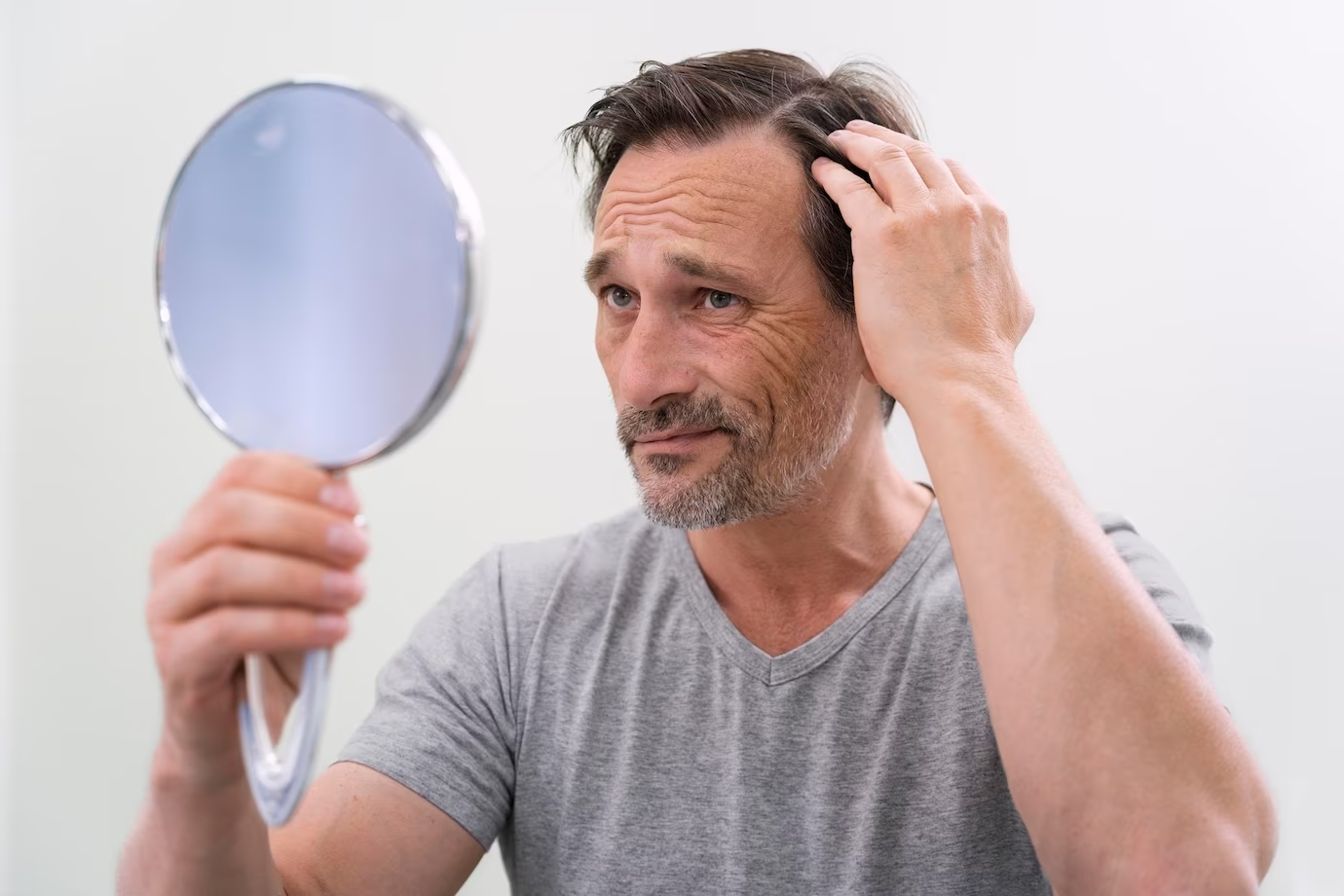Hair Loss


Are you concerned about losing your hair?
The most typical issue that both men and women experience is hair loss. Genetics, hormone changes, and drug interactions could all be to blame. Some cases of hair loss result in baldness, while others are revived by the emergence of new strands. The body sheds 50 to 100 hairs every day, which is entirely normal and barely perceptible, but shedding more than 100 hairs per day can be harmful.
Hair loss is quite unpredictable and common; it can thin down or even cause balding if you lose too much hair. The majority of baldness is genetic in nature. Male and female baldness patterns are terms used to describe permanent hair loss. It is a type of alopecia that affects the central scalp in women and the temporal, frontal, and vertex regions of the scalp in men.
Although this issue may have a long-term effect, there are still ways to address it. With several procedures, patients who are bald will be able to develop hair once more. As always, Healthy Choice Aesthetic Hospital uses a variety of innovative techniques to revive hair growth.
Who is afflicted by Androgenic Alopecia? What is it?
Androgenic alopecia is brought on by over-production of androgens, which over time causes hair follicles to shrink and generate thinner, shorter hairs. The male hormone dihydrotestosterone and hereditary factors work together to induce alopecia. Men, more so than women, can be impacted.
How can hair loss be diagnosed?
Without a proper diagnosis, a given disease may not be treatable effectively. Diagnosis is a required component of medical care. Many people may be concerned about whether or not all types of hair loss are prevalent and whether or not they receive the same therapy for each form of hair loss problem. The answer is that each type of hair loss has distinct causes and treatments. Knowing the diagnosis is crucial for this reason.
Through physical examination, medical history, and patient disclosure, doctors can make a diagnosis of hair loss. They may also inquire about the patient’s diet and medication use that has contributed to their thinning hair. In order to determine the type of hair loss, specialists additionally examine the scalp and hair.
We advise you to see a doctor right away if you’re experiencing excessive hair loss because getting a diagnosis early may help to avoid the condition from getting worse.
Why does hair fall happen?
Even though hair loss is frequent, it has a cause that might result in significant hair loss. The numerous reasons for hair loss include,
It is advisable to consult with a doctor to determine the primary reason for hair loss so that you can change the behaviors that are contributing to it.
What preventative measures are there against Hair Loss?
Although it may be difficult to stop hair loss, there are steps that may be taken to lessen it. People must realize that in order to avoid hair loss, the reasons of hair loss should be taken into consideration. Among the steps one can take to stop hair loss is,
What are the effective treatments for hair loss?
When prevention doesn’t work, treatments are available as a backup. Preventions can help to lower the chance of hair loss. At the Healthy Choice Aesthetic Hospital, a several therapies are available that aid in restoring your hair growth and preventing further excessive hair loss. The treatments involve both medicine and therapies. medicine can stop further hair loss and promote the growth of healthy hair, whereas therapies help to regrow hair, treat baldness, and thicken hair growth. Some treatments and drugs include:
Conclusion
In conclusion, hair loss is a common condition for both men and women. Hair loss is normal, but the difficulty emerges when it is excessive, resulting in baldness. A good diet, stress management, gentle hair care, avoiding harsh hair treatments, not smoking, and regular exercise can all help to prevent hair loss. In addition to prevention, there are therapies such as Low Laser Light Therapy, Platelet Rich Plasma, Hair Transplantation, Tricort, and medications that help restore and strengthen hair.


